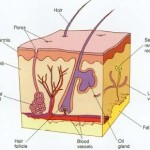Part One – Making Choices
Keeping pace with life’s To Do list, career, academics, and family… its tough. Its hard on the body, its hard on the mind, and it can be hard on the waistline too. It’s worth it – for evolution, advancement, and a life well lived – but how can one minimize the toll of stress?
Adapting effectively to stress requires both a short term and long-term commitment to nourishing and sustaining hormonal response. The body responds to chronic stress by first an alarm phase, then sustained effort, then exhaustion. Making appropriate nutritional choices and choosing herbal adaptogens that match the endocrine condition relieve strain and sustain long-term health.
First and Foremost – What can you actually do when you are exhausted, and hungry, and cant stop? One answer: eat something green. A fresh arugula salad would be perfect; however a greens drink is very convenient. Spirulina and other microalgae are the red blood cell equivalents of the plant kingdom. They provide an instant nutrient-rich boost of antioxidants, alkalinizing and balancing your starved system and tiding over the hunger until you can take a break. Mix greens with juice for blood sugar support, or choose green protein-enhanced shakes or bars if needed. Odwalla has a yummy green pre-made green Superfood smoothie. There are several products available in one-serving envelopes that travel well. If you are on *any* medications, including Hypertension, Birth Control, Antidepressant and Anti-Anxiety medications, please choose a formula that ONLY has the microalgae, and/or wheat grasses, without herbal components. The energy-supporting herbs used in many “energy greens” can have multiple medication interactions.
Protein is also an integral component of a high stress diet. The immune and hormonal systems require adequate protein for sustained cellular responses. This protein must be high quality: fast food meats or veggie burgers do not “count!” Good quality protein will create a smooth and better-sustained blood sugar response decreasing headaches, crabbiness, and dizziness while improving energy and balance. Include one serving of protein in most significant meals, and look for protein snacks on busy days.
Sugar, crackers, pastries, fruit or raw vegetables alone will burn quickly and leave you depleted. Lunchtime protein can include tahini on a cooked whole grain or steamed vegetables, avocado, hard-boiled eggs, nut butters and nut butter sauces, quinoa salads, and cheese in addition to fish or meat. Prepare ahead! Protein and fiber rich snacks like applesauce and cottage cheese, hard-boiled egg, toasted nuts and seeds with raisins, celery and nut butter can be pre-made and stored in little “to go” containers. It’s best to avoid consistent intake of processed proteins including whey and soy protein isolates as bars or shakes, but occasional use is well tolerated.
Therefore, the immediate moment, when you hit a wall look to greens and to protein for a boost. This will keep you from turning to sugar or fat to maintain your energy, keeping your waistline trim and nourishing your body rather than taxing it further.
If you cant get away from the piece of chocolate that seems like its the only thing that will save your day in that moment, choose a small piece of good quality chocolate! Research shows that small amounts of high quality chocolate actually have beneficial effects on our health. It is an antioxidant, and releases GABA neurotransmitter that is one of the “off” buttons in our brain. Commercial “industrial” chocolate, mochas, lattes, cookies, and other quick fixes have low nutritional value and provide high fat calories that lead to abdominal weight gain and create sugar addictions. Cacao Nibs are Nature’s superfood candy, and are a must for any true chocolate addict. Rich in magnesium, these replenish lost minerals lost through caffeine. Add Cacao Nibs to your trail mix with home-toasted walnuts, pumpkin seeds and organic raisins.
Long-term adrenal restoration in the form of individualized and endocrine-specific supplementation is also integral. Adrenal fatigue is a buzz term in today’s medicine, and will be the topic of Keeping the Pace – Part Two!
Cocoa and chocolate in human health and disease. Katz DL, Doughty K, Ali A, Antioxidants & Redox Signaling [Antioxid Redox Signal], ISSN: 1557-7716, 2011 Nov 15; Vol. 15 (10), pp. 2779-811; PMID: 21470061; http://web.ebscohost.com.ezproxy.ccnm.edu/ehos/viewarticle?data=dGJyMPPp44rp2%2fdV0%2bnjisfk5Ie46bNNsa6zTrOk63nn5Kx95uXxjL6nrkewrq1KrqevOK%2bwsVC4qbE4zsOkjPDX7Ivf2fKB7eTnfLujsUm2p7NMsaakhN%2fk5VXj5KR84LPrhuac8nnls79mpNfsVbCntE6zqbdIpNztiuvX8lXk6%2bqE8tv2jAAA&hid=17
The impact of chocolate on cardiovascular health. Fernández-Murga L, Tarín JJ, García-Perez MA, Cano A, Maturitas [Maturitas], ISSN: 1873-4111, 2011 Aug; Vol. 69 (4), pp. 312-21; PMID: 21665390





